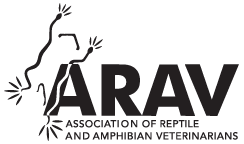Measuring the Physiologic Effects of Tricaine Methanesulfonate Sedation in Juvenile Lemur Tree Frogs (Agalychnis lemur)
Currently, there are more than 7700 described species of anurans. Unfortunately, amphibians are one of the most threatened classes of vertebrates. Because of this, anurans have become common in ex-situ programs. To provide a high level of care for these animals in captivity, sedation protocols are required to facilitate diagnostic and therapeutic procedures. Tricaine methanesulfonate (MS-222) has been used in anurans; however, research with this anesthetic is limited across anuran species, and dosages are highly variable. The purpose of this study was to: 1) perform a pilot study to determine a concentration of MS-222 for sedating lemur frogs (Agalychnis lemur), a critically endangered species, and 2) test the efficacy of this concentration for sedating 16 juvenile frogs for microcomputed tomography (mCT) scans. For the pilot study, 400 mg/L and 800 mg/L concentrations were selected. Based on rapid induction and recovery times, the 800 mg/L concentration was selected. For the sedation trial, baseline heart and gular rates and palpebral, escape, and righting reflexes were measured; these measurements were continued every 5 minutes until the frogs recovered. Frogs were induced within 5 minutes, and the mean recovery time was 38±12.6 minutes. While there was a transient reduction in heart rate after induction, it returned to baseline after the mCT scan. Gular movements decreased by 26% from baseline to recovery. All animals recovered without complications. The results of this study suggest 800 mg/L MS-222 is a safe and effective method of sedating lemur frogs for diagnostic imaging.Abstract
Contributor Notes



